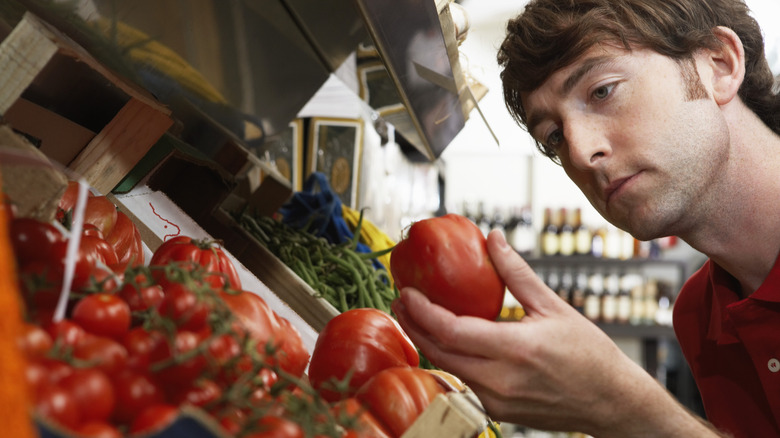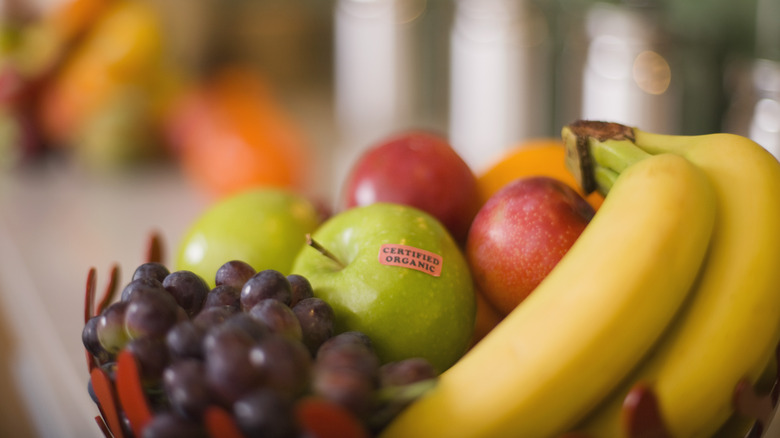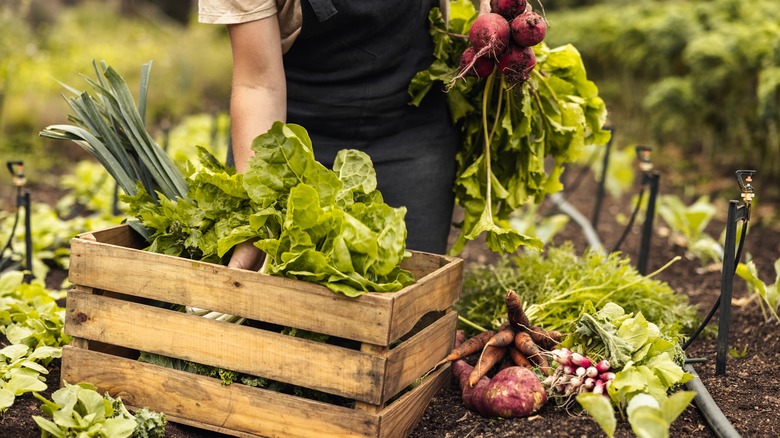The Line Between Fruit And Vegetable Is Blurrier Than We Think
Though it may seem like the difference between fruits and vegetables might come down to taste — after all, fruits tend to be sweeter and have more zest than vegetables — the truth is that it's a little more challenging to pin down. Things get even more complicated when you bring in other crops, like potatoes or pumpkins, which are more savory than traditional fruits or vegetables.
However, despite how we often classify vegetables and fruits based on their taste or texture, from a scientific point of view, this is entirely inaccurate. Fruits and vegetables are categorized differently based on what part of the plant we are eating, though at the end of the day, how we treat certain items while cooking also plays a role in how we label certain foods. So what's the real difference? Here's how you can settle the debate once in for all the next time you find yourself in a heated food debate.
What are fruits?
What do apples, blueberries, and citrus fruits all have in common? They all grow on different plants, which makes them fruit. According to Medical News Today, "fruits are from the flowering part of a plant and contain seeds." In other words, plants like trees, bushes and vines grow independently, producing fruit as flowers containing their seeds to create more trees, bushes, and vines. Rather than being the whole product, a fruit is the byproduct of another plant.
This means the jury is out for whether or not tomatoes are fruits, at least from the scientific definition. Tomatoes, despite having a less sweet flavor than other fruits, grow on bushes and contain seeds to grow other tomato bushes, thus making them a fruit. Despite this technical definition, many credible sources still claim that tomatoes are vegetables, including FoodData Central (FDC), the nutrient database for the United States government. Again, this is because people often use taste as the basis for defining fruits or vegetables.
What are vegetables?
Fruits contain seeds and come from the flowers of other plants, but vegetables are any other part of the plant that was grown primarily for a food source, such as carrots, potatoes, lettuce, or broccoli, for example. However, other plants like wheat or corn are still not labeled vegetables, at least not directly. These crops are grains, which are the harvested seeds of different grasses. Because of this criterion, barley and oats also qualify as grains.
Interestingly enough, corn can also be labeled as a fruit, or at least the individual corn kernels, because they contain seeds and grow from the flower of the plant. From the taste perspective, many people still label corn a vegetable because it is often eaten with other vegetables like broccoli. As you can see, the lines get hazy when properly labeling foods, and it depends on how you want to categorize them. Chefs may call tomatoes vegetables, and botanists may label them as fruit, and they'd both be correct. So next time you find yourself fiercely debating how tomatoes or any plant should be classified, choose any side you want. After all, you won't be wrong.



